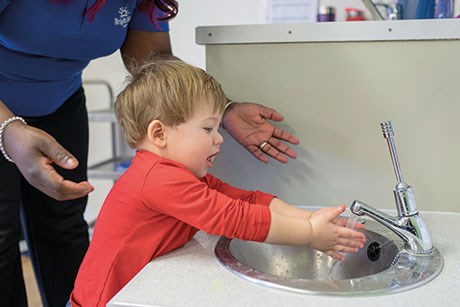Struggling to fit a Speech Home Programme into your life?
So you want to help your child make steady progress towards improving his or her speech but…..
Another week has passed by and you haven’t managed to do much practice at home.
Most parents, carers and educators we work with as Speech Pathologists come to us with the very best of intentions for completing practice in between speech pathology appointments.
The truth is that very few manage to do so!
How do you fit a speech pathology home programme into your life?
If you want your child to get the most out of intervention and to work towards achieving their speech, language and communication goals…home practice is just an unavoidable ingredient in getting there.
Home practice doesn’t have to be something that both you and your child dread.
It can and should be a positive addition to your week.
Here are some tips to make it happen.
Be realistic
Start by taking a good look at your week and your ‘must do’ commitments.
Block out the times in your weekly calendar or diary where you are otherwise committed.
Now that you have a visual on your specific situation, decide how many home practice times you are going to commit to doing with your child.
Be realistic and remember that a small amount of regular, well-done home practice is a great place to start. You are more likely to be able to build upon this so start small. Maybe look at 3 times/week and keep your practice times to 15 minutes.
Remember, even for our school aged children…speech pathology home practice needs to be guided and supported by a parent, carer and/or educator so resist the temptation to try and ‘squeeze’ home practice into too many days when you are unlikely to be able to provide your full attention and support.
Book those times into your calendar. Choose the times of the day that will be more conducive to home practice.
Times where you are likely to be less distracted by other children. other tasks and other stimuli in your environment.
Ideally, the times for home practice are those where you can dedicate your entire focus and presence towards your child.
These times need to be positive. That doesn’t mean that you need to pull out all of the bells and whistles but ideally these times are enjoyed by both yourself and your child. For younger children, a box of stickers and stamps as rewards for effort can work a treat. For slightly older children, there are plenty of fun cause/effect games that can be incorporated into therapy.
Pop up Pirate https://www.bigw.com.au/product/tomy-pop-up-pirate/p/4511045 , Greedy Granny https://www.bigw.com.au/product/greedy-granny/p/89891, and Phil the Fridge https://www.target.com.au/p/phil-the-fridge/60768933are some of our favourites.
Discuss what needs to be happening in your child’s home practice times in detail with your child’s speech pathologist. It is really important that home practice doesn’t feel ‘too hard’ for your child and that you have some good strategies to assist at these moments in order to keep your child motivated and engaged. We discussed some ideas to help encourage your child at these moments here https://learn2communicate.com.au/i-dont-want-to-when-children-wont-do-their-speech-home-programmes/
Most […]








